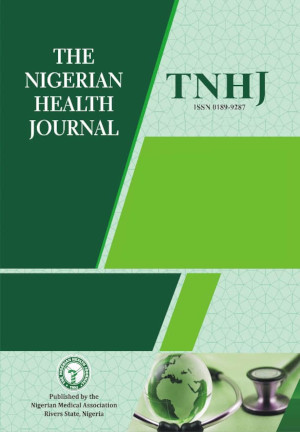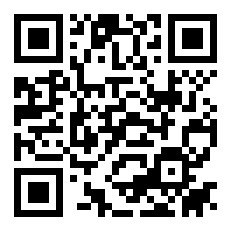Effects of a community volunteer-driven intervention on caregivers' knowledge and practice of childhood immunization in rural communities of Rivers state
DOI:
https://doi.org/10.60787/tnhj.v22i3.610Keywords:
Immunization, community-volunteers, caregivers, Knowledge, practices, Rivers StateAbstract
Background: Immunization is a cost-effective public health tool, preventing about three million deaths among children annually. This study was aimed at assessing the effectiveness of a community volunteer-driven intervention in improving caregivers knowledge and practice of routine childhood immunization in rural communities of Rivers State.
Methods. A randomized controlled study was conducted among caregivers with infants between 0 to 6 weeks of age in rural communities. A total of 368 caregivers were enrolled in the study through a multistage sampling technique and randomized into intervention or control groups and followed for 9 months. The intervention was a structured immunization education for caregivers in the intervention group, while the control was left out. Data were collected with a pretested, semi-structured, interviewer-administered questionnaire.
Results. There were 153 (83.2% caregivers in the intervention group and 148 (80.4%) in the control group. Their mean ages were 30.2 ± 7.9 years (intervention group); 31.9 ± 10.1years (control group). There was a significantly better knowledge of immunization in the intervention group, 114 (64.9%) compared to the control group, 98 (59.0%) (X2=7.55, p=0.02), and also a significantly better practice of immunization in the intervention group, 139 (80.4%) compared to the control group, 97 (58.4%) (X2=21.93, p=0.000).
Conclusion. Structured immunization education by trained community members significantly improved knowledge and practice of childhood immunization among caregivers. And therefore, recommended for improving immunization uptake and child survival in rural communities.
Downloads
References
World Health Organization. Global Vaccine Action Plan 2011-2020. Geneva: World Health Organization; 2013.
Ozawa S, Clark S, Portnoy A, Grewal S, Stack ML, Sinha A, et al. Estimated economic impact of vaccinations in 73 low‐and middle‐income countries, 2001–2020. Bulletin of the World Health Organization. 2017; 95(9): 629–638. https://doi.org/10.2471/BLT.16.178475.
Federal Ministry of Health. National strategies and guidelines for home and community management of malaria. Abuja: Nigeria. Federal Ministry of Health; 2010.
Jain M, Engelbert M, Gaarder M, Bagai A, Eyers J. PROTOCOL: Use of community participation interventions to improve child immunisation in low‐and middle‐income countries: A systematic review and meta-analysis. Campbell Systematic Reviews, 2020;16: e1119. https://doi.org/10.1002/cl2.1119.
Sabarwal S, Bhatia R, Dhody B, Perumal S, White H, Puri J. Engaging communities for increasing immunisation coverage: What do we know? 3iescoping paper 3, New Delhi: International Initiative for Impact Evaluation (3ie); 2015.http://www.3ieimpact.org/media/filer_public/2016/12/01/3ie_immunisation_scoping_report_3.pdf.
Adedire EB, Ajayi I, Fawole OI, Ajumobi O, Kasasa S, Wasswa P, Nguku P. Immunisation coverage and its determinants among children aged 12-23 months in Atakumosa-west district, Osun State Nigeria: a cross-sectional study. BMC Public Health. 2016; 16:905.
Biset G, Woday A, Mihret S, Tsihay M. Full immunization coverage and associated factors among children age 12-23 months in Ethiopia: systematic review and meta-analysis of observational studies. Hum Vaccin Immunother. 2021; 17(7):2326-2335. DOI: 10.1080/21645515.2020.1870392.
Eze P, Agu UJ, Aniebo CL, Agu SA, Lawani LO, Acharya Y. Factors associated with incomplete immunisation in children aged 12-23 months at subnational level, Nigeria: a cross-sectional study. BMJ Open. 2021; 11(6): e047445. DOI: 10.1136/bmjopen-2020-047445. PMID: 34172548; PMCID: PMC8237740.
Negussie A, Kassahun W, Assegid S, Hagan AK. Factors associated with incomplete childhood immunization in Arbegona district, southern Ethiopia: a case-control study. BMC Public Health. 2016; 16:27. DOI: 10.1186/s12889-015-2678-1. PMID: 26757893; PMCID: PMC4711011.
Porth JM, Wagner AL, Teklie H, Abeje Y, Moges B, Boulton ML. Vaccine nonreceipt and refusal in Ethiopia. The expanded program on immunization coverage survey, 2012. Vaccine. 2019; 37:2106. https://doi.org/10.1016/j.vaccine.2019.02.045.
Tadesse T, Getachew K, Assefa T, Ababu Y, Simireta T, Birhanu Z, Hailemichael Y. Factors and misperceptions of routine childhood immunization service uptake in Ethiopia: findings from a nationwide qualitative study. Pan Afr Med J. 2017; 5:28. https://dx.doi.org/10.11604%2Fpamj.2017.28.290.14133.
Wemakor A, Helegbe GK, Abdul-Mumin A, Amedoe S, Zoku JA, Dufie AI. Prevalence and factors associated with incomplete immunization of children (12-23 months) in Kwabre East District, Ashanti region, Ghana. Arch Public Health. 2018; 76:67. https://dx.doi.org/10.1186%2Fs13690-018-0315-z.
Wiysonge CS, Young T, Kredo T, McCaul M, Volmink J. Interventions for improving childhood vaccination coverage in low-and middle-income countries. S Afr Med J. 2015;105(11):892-893. DOI:10.7196/SAMJ. 2015.v105i11.10177.
Saeterdal I, Lewin S, Austvoll‐Dahlgren A, Glenton C, Munabi‐Babigumira S. Interventions aimed at communities to inform and/or educate about early childhood vaccination. Cochrane Database of Systematic Reviews, 2014. https://doi.org/10.1002/14651858.CD0102 32.pub2.
Kaufman J, Ryan R, Walsh L, Horey D, Leask J, Robinson P, Hill S. Face-to-face interventions for informing or educating parents about early childhood vaccination. Cochrane Database of Systematic Reviews. 2018; Issue 5. Art. No: CD010038. DOI: 10.1002/14651858.CD010038.pub3.
Oyo-Ita A, Bosch-Capblanch X, Ross A, Oku A, Esu E, Ameh S, et al. Effects of engaging communities in decision-making and action through traditional and religious leaders on vaccination coverage in Cross River State, Nigeria: A cluster-randomised control trial. PLoS ONE. 2021;16(4): e0248236. https://doi.org/10.1371/journal. pone.0248236.
Tobin-West CI, Briggs NCT. Effectiveness of trained community volunteers in improving knowledge and management of childhood malaria in a rural area of Rivers State, Nigeria. Nigerian Journal of Clinical Practice. 2015; 18 (5):651-658.
Wang H, Chow SC. Sample Size Calculation for Comparing Proportions. 2007. https://doi.org/10.1002/9781118445112.stat07091.
UNICEF: Progress report 2017. Common thing to child survival. A promise renewed. Prepared by UNICEF Division of Policy and Strategy, New York, USA, September 2017.
Adenike OB, Adejumoke J, Olufunmi O, Ridwan O. Maternal characteristics and immunization status of children in North Central of Nigeria. Pan African Medical Journal. 2017; 1937-8688. Available at www.panafrican-med-journal.com. Accessed (2022 Jan 19).
Downloads
Published
How to Cite
Issue
Section
License
Copyright (c) 2022 The Nigerian Health Journal

This work is licensed under a Creative Commons Attribution-NonCommercial-NoDerivatives 4.0 International License.
The Journal is owned, published and copyrighted by the Nigerian Medical Association, River state Branch. The copyright of papers published are vested in the journal and the publisher. In line with our open access policy and the Creative Commons Attribution License policy authors are allowed to share their work with an acknowledgement of the work's authorship and initial publication in this journal.
This is an open access journal which means that all content is freely available without charge to the user or his/her institution. Users are allowed to read, download, copy, distribute, print, search, or link to the full texts of the articles in this journal without asking prior permission from the publisher or the author.
The use of general descriptive names, trade names, trademarks, and so forth in this publication, even if not specifically identified, does not imply that these names are not protected by the relevant laws and regulations. While the advice and information in this journal are believed to be true and accurate on the date of its going to press, neither the authors, the editors, nor the publisher can accept any legal responsibility for any errors or omissions that may be made. The publisher makes no warranty, express or implied, with respect to the material contained herein.
TNHJ also supports open access archiving of articles published in the journal after three months of publication. Authors are permitted and encouraged to post their work online (e.g, in institutional repositories or on their website) within the stated period, as it can lead to productive exchanges, as well as earlier and greater citation of published work (See The Effect of Open Access). All requests for permission for open access archiving outside this period should be sent to the editor via email to editor@tnhjph.com.









